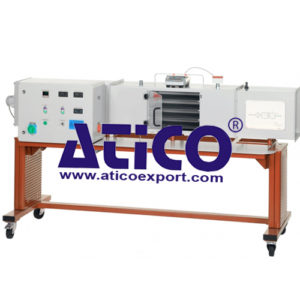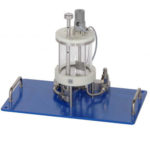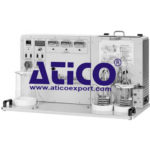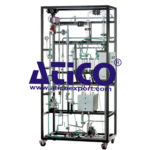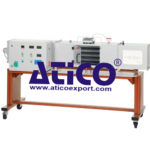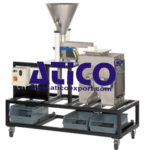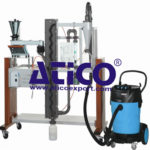Convection dryers are often used for drying solids in food technology. The can be used to investigate and demonstrate the process of convection drying of granular solids.
Four corrosion resistant removable plates are available for drying the solid. They are placed in a drying channel. The plates containing the solid to be dried are exposed to an air flow in the channel. The air flow heats the solid and also removes any moisture released. Air velocity can be adjusted by the speed of a fan. An adjustable heater allows the heating of the air. The transparent door in the drying channel allows the drying process to be observed.
Learning Objectives And Experiments
- Influence of air temperature and humidity on drying intensity
- Plotting of drying curves with constant external conditions
- Determination of drying rate with different air parameters and different solid properties
- Evaluation of drying processes using energy and mass balances
Features
- Pneumatic pressure-lifting of solids in a vertical tube
- Transparent tubes and tanks to observe different transport states
- Practical experiments on a laboratory scale
Specification
- Drier for investigating convection drying of solids
- Drying on 4 corrosion resistant plates in a drying channel with an air flow
- Adjustment of air velocity via speed of fan
- Air heating with controlled heater
- Digital balance for measuring the change of weight during drying
- 1 combined sensor for measurement of humidity and temperature before and after the solid sample
- 1 air velocity sensor
Technical Specification
- Drying channel
- Length: 2340mm (with fan)
- Internal dimensions: 350x350mm
- Fan
- Power: 33W
- Max. Output: 700m3/h
- Max. Speed: 950min-1
- Heater
- Power: 0…6750W
- With adjustable temperature limiter
- Balance
- Measuring range: 0…10000g
- Resolution: 0,1g
- Measuring ranges
- Air humidity: 0…100% r.F.
- Temperature: 0…125°C
- Flow velocity: 0…2,5m/s
- 400V, 50Hz, 3 phases
- 400V, 60Hz, 3 phases
- 230V, 60Hz, 3 phases

